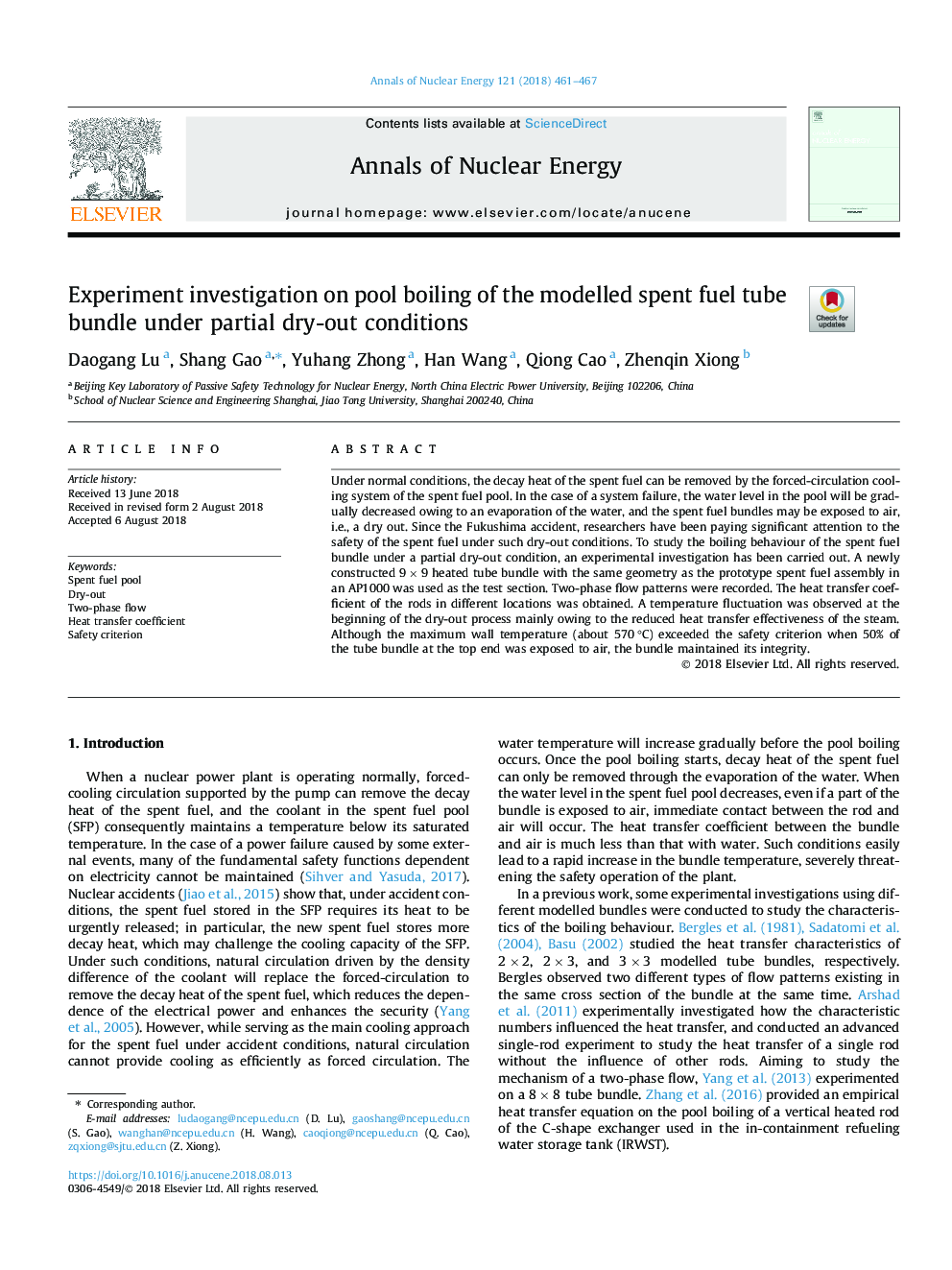| Article ID | Journal | Published Year | Pages | File Type |
|---|---|---|---|---|
| 11007346 | Annals of Nuclear Energy | 2018 | 7 Pages |
Abstract
Under normal conditions, the decay heat of the spent fuel can be removed by the forced-circulation cooling system of the spent fuel pool. In the case of a system failure, the water level in the pool will be gradually decreased owing to an evaporation of the water, and the spent fuel bundles may be exposed to air, i.e., a dry out. Since the Fukushima accident, researchers have been paying significant attention to the safety of the spent fuel under such dry-out conditions. To study the boiling behaviour of the spent fuel bundle under a partial dry-out condition, an experimental investigation has been carried out. A newly constructed 9â¯Ãâ¯9 heated tube bundle with the same geometry as the prototype spent fuel assembly in an AP1000 was used as the test section. Two-phase flow patterns were recorded. The heat transfer coefficient of the rods in different locations was obtained. A temperature fluctuation was observed at the beginning of the dry-out process mainly owing to the reduced heat transfer effectiveness of the steam. Although the maximum wall temperature (about 570â¯Â°C) exceeded the safety criterion when 50% of the tube bundle at the top end was exposed to air, the bundle maintained its integrity.
Related Topics
Physical Sciences and Engineering
Energy
Energy Engineering and Power Technology
Authors
Daogang Lu, Shang Gao, Yuhang Zhong, Han Wang, Qiong Cao, Zhenqin Xiong,
